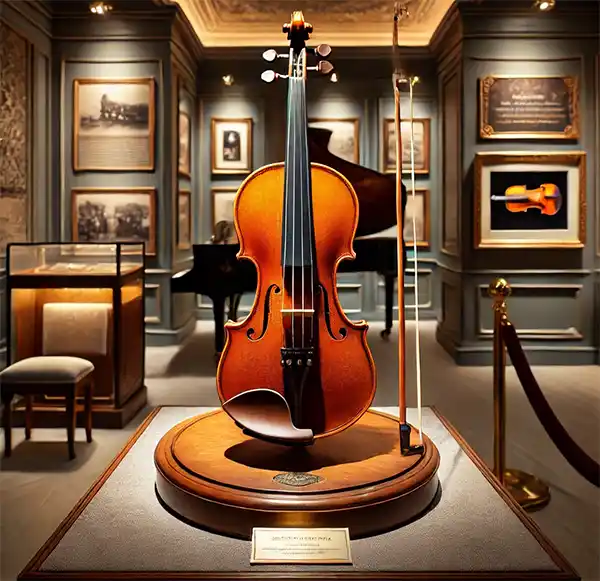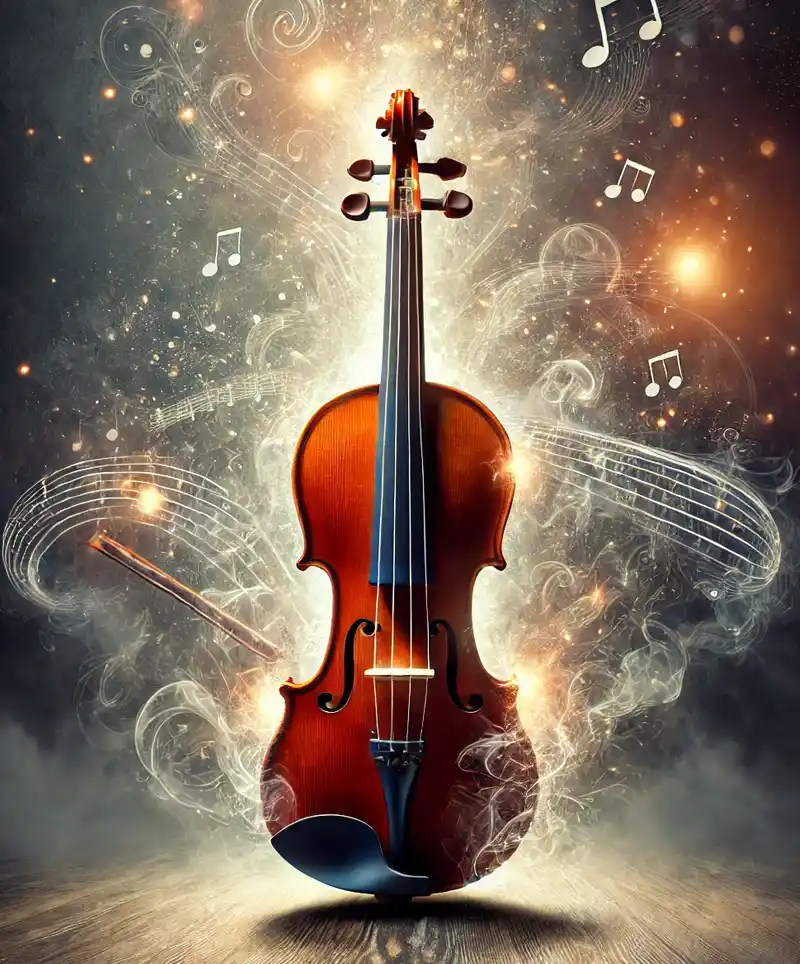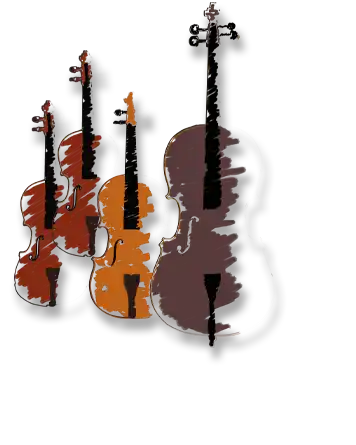Celebrating National Violin Day
Ah, the violin—the instrument that has serenaded lovers, inspired symphonies and occasionally caused a beginner’s cat to flee the room in terror. National Violin Day is here to celebrate this exquisite creation, which is equal parts a musical marvel and a test of human patience. Whether you’re a seasoned virtuoso or someone who thinks “G-string” is a clothing term, there’s something magical about this four-stringed wonder.
A Bow-Worthy History
The violin, often referred to as the “queen of instruments,” traces its roots back to 16th-century Italy. Crafted from spruce and maple, early violins were painstakingly designed by master luthiers like Andrea Amati and Antonio Stradivari. Stradivarius violins, in particuElelar, are still considered the gold standard of craftsmanship—their price tags could buy you a small island or a really fancy coffee table.
Over the centuries, the violin has played a starring role in countless musical genres, from classical compositions by Beethoven and Bach to the toe-tapping fiddles of bluegrass and folk. It’s the one instrument that can make you cry at a concert hall and then cheer at a barn dance—talk about versatility!
Small but Mighty
At first glance, the violin may seem deceptively simple: four strings, a wooden body, and a bow. But this tiny powerhouse packs a punch. The strings are traditionally made of gut, steel, or synthetic materials, and are tuned to G, D, A, and E. The bow, strung with horsehair, glides across the strings to create sound—or, in the hands of a beginner, a sound-adjacent screech.
 Even the most basic violin requires a level of craftsmanship that borders on obsession. The curves, the varnish, the precise placement of the sound post—it’s like the instrument is daring you to master it. And yet, for those who persevere, the rewards are nothing short of transcendent.
Even the most basic violin requires a level of craftsmanship that borders on obsession. The curves, the varnish, the precise placement of the sound post—it’s like the instrument is daring you to master it. And yet, for those who persevere, the rewards are nothing short of transcendent.
In recent years, the electric violin has brought a modern twist to this classic instrument. By incorporating electronic amplification and effects, the electric violin allows musicians to explore new genres and soundscapes, from rock to experimental music. It’s a testament to the violin’s adaptability and its ability to remain relevant across centuries of musical evolution.
Famous Fiddlers and Virtuosos
The world of violins has no shortage of legends. Paganini, the 19th-century virtuoso, was so skilled that rumors swirled he’d made a pact with the devil. (Spoiler: it was probably just practice.) His fiery compositions and daring techniques pushed the limits of what the violin could achieve, earning him rockstar status in his era.
Then there’s Itzhak Perlman, whose soulful performances have brought audiences to their feet for decades. Known for his warmth and technical brilliance, Perlman has become a global ambassador for classical music. Meanwhile, modern stars like Hilary Hahn have redefined the violin’s place in contemporary music, blending classical roots with fresh interpretations that resonate with today’s audiences.
Fiddlers like Alison Krauss and Mark O’Connor have shown that violins aren’t just for symphonies—they can make country, folk, and bluegrass music soar. Their nimble bow work and infectious melodies have inspired a new generation of players to pick up the instrument and explore its folk traditions.
Of course, let’s not forget the fictional greats: Sherlock Holmes was an accomplished violinist, proving that even brilliant detectives need a hobby. And let’s not overlook the countless unsung heroes—the street performers, the orchestra members, and the enthusiastic beginners—who keep the violin’s rich legacy alive.
Why We Love the Violin (Even If It Doesn’t Love Us Back)
The violin’s sound is often described as the closest thing to the human voice. It can wail, whisper, or weep, evoking a spectrum of emotions. It’s an instrument that demands respect—and a bit of humility. (Who among us hasn’t seen a beginner violinist’s first recital and thought, “Bless their hearts”?)
Beyond its sound, the violin is a work of art. Its design is both functional and beautiful, with every curve and detail serving a purpose. It’s the original multitasker: equal parts sculpture, science, and soul. The violin also has a certain mystique. It carries centuries of tradition, each instrument whispering stories of its maker and players. Holding one feels like stepping into a living piece of history.
And let’s not forget its versatility. The violin can bring a tear to your eye during a soulful concerto or make your feet stomp during a rollicking fiddle tune. It’s equally at home in the grandest concert hall as it is around a cozy campfire. This adaptability is a testament to its timeless appeal, capable of captivating audiences across cultures and generations.
How to Celebrate National Violin Day
National Violin Day is the perfect excuse to embrace the charm of this timeless instrument, whether you’re an accomplished player, an enthusiastic listener, or someone who simply appreciates the beauty of music. From live performances to personal attempts at mastering a tune, there are countless ways to make this day harmonious and memorable.
- Attend a Concert: Whether it’s a classical recital or a local bluegrass band, treat yourself to live violin music. There’s nothing quite like the sound of strings in action.
- Learn a Tune: If you’ve got a violin gathering dust in the corner, today’s the day to pick it up. Don’t worry if you’re rusty—even the greatest players had to start somewhere.
- Watch a Violin Film: Movies like The Red Violin or documentaries about Stradivarius violins offer fascinating insights into the instrument’s history and mystique.
- Support a Music Program: Donate to schools or organizations that provide access to musical education. Violins can change lives, but only if people have the opportunity to play them.
National Violin Day is a chance to celebrate not just the instrument, but the people who bring it to life. From luthiers and teachers to players of all skill levels, violins remind us of the power of music to connect, inspire, and move us. So, whether you’re bowing expertly or just bowing out of the room to avoid a beginner’s practice session, take a moment to appreciate this remarkable instrument. And if you’re feeling bold, maybe even give it a try—just warn the neighbors first.
Please Share our Content






 Even the most basic violin requires a level of craftsmanship that borders on obsession. The curves, the varnish, the precise placement of the sound post—it’s like the instrument is daring you to master it. And yet, for those who persevere, the rewards are nothing short of transcendent.
Even the most basic violin requires a level of craftsmanship that borders on obsession. The curves, the varnish, the precise placement of the sound post—it’s like the instrument is daring you to master it. And yet, for those who persevere, the rewards are nothing short of transcendent.








 "Sláinte!" is a traditional Irish expression used as a toast, equivalent to "Cheers!" in English.
"Sláinte!" is a traditional Irish expression used as a toast, equivalent to "Cheers!" in English.